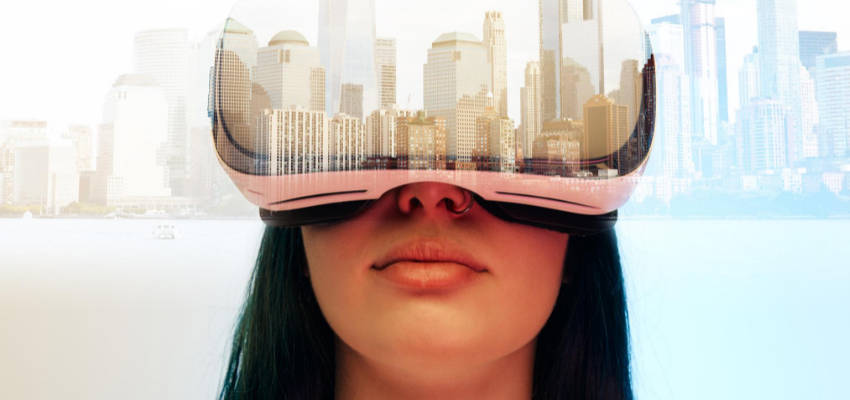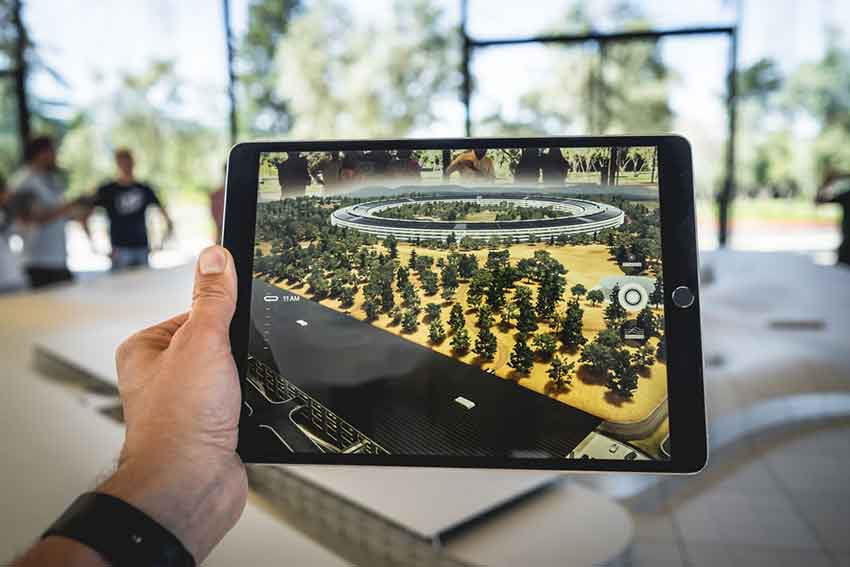Show:
Ways Virtual Reality Will Transform The Future Of Advertising
The captivating realm of virtual reality (VR) has been transforming various industries, and advertising is no exception. With immersive experiences becoming a critical component of consumer engagement, VR is set to revolutionize the marketing landscape in unprecedented ways.
Brands are increasingly leveraging this technology to create unforgettable advertisements that spark curiosity, evoke emotions, and establish strong connections with their target audience.

As consumers grow more discerned about the content they consume, advertisers are consistently seeking innovative ways to capture their attention. Virtual reality offers the perfect solution by providing fully immersive and interactive experiences that transport users into alternate worlds – blurring the lines between reality and imagination.
This powerful storytelling tool allows marketers to create highly engaging narratives that resonate with viewers on a personal level, driving brand loyalty and customer conversions like never before. As VR technology continues to evolve and become more accessible, it’s clear that the world of advertising is on the cusp of a significant transformation.
Join us as we explore the world of VR advertising and discover how this cutting-edge technology will shape the future of promotions and customer interactions, leading to a new era of immersive marketing experiences!
What Is VR Advertising?
Before diving into VR advertising, the essential question to answer is, what’s VR?
VR is a computer-generated simulation that allows users to immerse themselves in a three-dimensional environment, interact with objects, and experience situations as if they were physically present. By using specialized headsets and sometimes additional accessories like gloves or handheld controllers, users can navigate and engage within these virtual worlds.
Now, let’s explore the concept of VR advertising.
This innovative marketing approach utilizes virtual reality technology to create highly interactive and engaging ads for consumers. By immersing users in a 3D environment, these advertisements offer a new level of interactivity and realism, making them more memorable and effective compared to traditional methods. VR ads provide marketers with endless possibilities to create unique experiences that resonate with their target audience, paving the way for more authentic connections between brands and consumers.
Through the power of immersive storytelling and sensory-rich simulations, VR advertising has the potential to revolutionize the way brands communicate their message and form lasting relationships with their customers.
So, how exactly is VR going to transform the future of advertising?
Virtual Experiencing Of Products – Mixed Reality
One of the most significant advantages of VR advertising lies in its ability to let consumers virtually experience products before making a purchase decision.
This mixed reality approach allows customers to interact with products in a simulated environment, providing a deeper understanding of their features and benefits. As a result, consumers can make more informed decisions about their purchases, leading to increased satisfaction and reduced return rates.
Moreover, brands can showcase their offerings in new and exciting ways, setting themselves apart from competitors while boosting conversion rates.

In-Game & In-App Advertising
The gaming industry has long been leveraging the potential of in-game ads to reach highly engaged audiences. With VR technology becoming more mainstream, advertisers can now deliver even more immersive in-game promotions that seamlessly blend with the virtual environment.
Similarly, in-app VR ads can elevate user experiences by adding an extra layer of interactivity and personalization. This type of targeted advertising not only enhances the overall gaming or app experience but also significantly increases ad recall and effectiveness.
Decreased Need for In-Person Interactions
With the global pandemic forcing businesses to adapt to remote operations, VR advertising presents an opportunity to minimize in-person interactions without sacrificing customer engagement. Virtual showrooms and product demonstrations can all be conducted within the safe confines of a virtual environment.
Moreover, VR advertising is not just limited to showcasing products or services but can also be utilized for creating unique branded experiences. From virtual concerts, trade shows, and fashion shows to interactive games, exhibitions, and simulations, brands can now offer one-of-a-kind opportunities for customers to engage with them beyond conventional mediums.
This not only reduces costs for businesses but also caters to the growing demand for digital-first experiences among consumers.
Driving Empathy in Non-profit Advertising
VR’s immersive nature makes it a powerful tool for non-profit organizations looking to evoke empathy and inspire action. By placing viewers in the shoes of those affected by various causes, virtual reality can create compelling narratives that drive donations and support.
Unlike traditional media, VR elicits strong emotional responses by transporting users into different realities, making it an invaluable asset for non-profit advertising campaigns.
Product Training Implementation for Buyers
In addition to its advertising potential, VR technology can be utilized for product training purposes. Businesses can create immersive training modules for potential buyers, helping them understand product features and usage more effectively than through text or video alone.
This interactive approach not only streamlines the onboarding process but also ensures customers are well-equipped to make the most out of their purchases.
Overall Improved Customer Experience
Ultimately, embracing VR technology in advertising leads to a more satisfying customer experience. By offering immersive, personalized content that addresses individual needs and preferences, brands can foster stronger relationships with their audience.
Furthermore, virtual experiences reduce decision-making barriers by providing easily accessible information and hands-on interactions that empower consumers throughout the purchasing journey.
In Conclusion
As virtual reality continues to advance at breakneck speed, its impact on the advertising industry will undoubtedly grow. From immersive product experiences and in-game promotions to empathetic storytelling and improved customer service, VR technology holds immense potential for transforming the way brands engage with their audiences.
As advertisers look towards a future driven by innovation and interactivity, the integration of VR into marketing strategies will become increasingly essential for success.

 Return to Previous Page
Return to Previous Page








